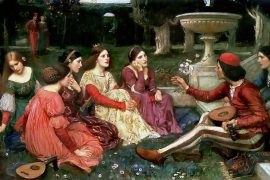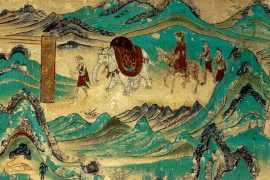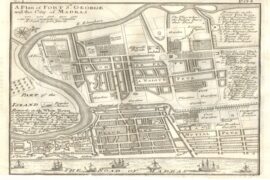In 1908, a man named Taraknath Das fled to the US to escape imprisonment for orchestrating revolutionary activities in India. A man who believed in revolutionary ideas, he published Free Hindustan, a radical newspaper that encouraged people to take up arms.
Following him, many Indian revolutionaries sought asylum in the United States. Consequently, the movement gained momentum on the Pacific coast. The Ghadar party’s revolutionary activities — and their connection with the Germans — caught the attention of the United States to such an extent that the entire community faced mass deportation.
However, a lawyer named Sakharam Ganesh Pandit fought for their citizenship rights and got the court decision reversed. Had it not been for his efforts, the citizenship of all Indians who entered the United States after 1923 could have been revoked.
Sakharam Ganesh Pandit was born in Ahmedabad, Gujarat, in December 1875. He obtained a Bachelor of Arts at the English University in Bombay and a doctorate from the Orthodox Sanskrit University of Benaras, considered prestigious at the time.
In 1909, Pandit came to the United States and gained influence as a “High Caste Brahmin Teacher and Lecturer from India.” Given his education in an English school, it was not hard for him to communicate with Americans effortlessly. He also offered ‘spiritual lessons’ from Swami Vivekananda’s life and the teachings of Jesus, making him popular not only amongst Indians but also Americans.
The American naturalisation legislation of 1790 and 1875 allowed only ‘white persons’ to become citizens of the United States; it was designed to keep immigrants of colour out of the United States. Many debates surrounded whether Indian immigrants qualified under this law.
Since 1907, citizenship applications of ‘High Caste Hindus’ were accepted; some 70 Indians were granted citizenship. In 1910, the lawyers argued that Indians of ‘high caste’ were ‘Caucasian in nature’ and were to be considered ‘white persons‘ because of the early Aryan migration.
Pandit received his citizenship and residence in California in 1914 on the claim that he was a ‘high-caste Caucasian,’ a ‘descendent of Aryans.’ Judge Morrison’s ruling, published in San Francisco Reporter, says Pandit was ‘a man of good moral character and marked intellectual attainments and achievements,’ who ‘represents the highest type of Hindu race, its culture, and thought.’
After this, Pandit represented other Indians in courts as their lawyer and helped them naturalise under the same conditions; however, growing activism amongst the community accelerated racial bias against Indians.
Moreover, by 1917, the Ghadar movement had collapsed, and the British pressured the government of the United States to curtail the movement of people associated with the party. British agents, in partnership with the New York City police, uncovered the relationship between Ghadar activists and the German government and indicted 105 people on the charges of conspiracy.
At the end of the five-month trial, violence erupted among the Indian defendants, and many were typecast as ‘wicked,’ resulting in a hostile attitude of the United States against the entire group of Indians residing in the country. And after the end of World War I, anti-Orientalism resulted in the Japanese exclusion in 1922, which raised questions about the definition of ‘white persons.’
In February 1923, Pandit stood with Bhagat Singh Thind in the courthouse as the defending lawyer. Thind’s advocacy of Indian independence and involvement with the Ghadar party had led him into controversy and was brought up in the courts. Pandit argued that Thind identified himself as a high-caste Hindu of Amritsar. Since the North-Indians came from an Aryan bloodline, he claimed, he qualified as a ‘Caucasian or White Person.’
The Court ruled against Thind, stating that the immigration policy does not entail the word ‘caucasian’ but ‘white persons,’ which are words of common speech.
It may be true that the blond Scandinavian and the brown Hindu have a common ancestor in the dim reaches of antiquity, but the average man knows perfectly well that there are unmistakable and profound differences between them today.”
The Court argued that Thind was not a ‘white person’. Instead, it argued that immigration policies were meant exclusively for immigrants from the British Isles and North-western Europe. Additionally, using the Act of 1917, the Court argued that all natives of Asia, including Indians, were excluded from admission to the United States and, consequently, naturalisation.
Following Thind’s case, Indians faced annulments of their citizenship status. Fifty Indians were deported on the charges that they procured the naturalisation certificates illegally. In 1926, Pandit himself faced the cancellation of his citizenship in Court. However, this time, instead of arguing from the standpoint of ‘high-caste,’ he framed himself as a victim.
He argued that after being a citizen of the United States, if he were to return to India, he would become an outcast, one of the ‘untouchables’, an unthinkable prospect. He argued that he would become stateless, and even his wife, who was American by birth, would lose her citizenship under the Cable Act of 1922.
After becoming a citizen of the United States, he married Lillian Stringer in 1920, a woman born on American soil and of French and English ancestry. The marriage was legal only in California as Pandit was recognised as ‘White’ based on his citizenship. As per the Miscegenation law of California, interracial marriages were not considered legal. Pandit also owned a house worth $15,000 (worth over $200,000) today.
By accepting the citizenship of the United States in 1914, Sakharam Ganesh Pandit argued he had ‘given up’ his ‘high caste’ status, his degrees, and his right to inherit property. Pandit argued that by cancelling his citizenship, the government threatened his livelihood, his property, and his marriage.
With this argument, the Supreme Court recognised that Pandit had received citizenship through a fully functional court and, hence, legally procured and cannot be contested. The Court of Appeals held the following:
It is thus conclusively established by the Supreme Court that a judgment granting a certificate of naturalisation is a final judgment… By the same token erroneously granting naturalisation to the defendant, the right to citizenship having been distinctly put in issue, the United States appearing and contesting, and the issue directly determined by a court of competent jurisdiction, the judgment, not having been modified or reversed, cannot now be disputed.
Pandit’s perseverance and clever comeback after Thind’s case resulted in a victory that extended to all fellow citizens who shared his heritage. Since the judgment applied to a Hindu in this case, it was applied to everyone naturalised under similar circumstances, and the government dismissed all denaturalisation cases against Indians at the time.
Pandit continued to live in California; taught, lectured, and practised law. He died in 1959 at the age of 89.
His court battle against immigration policies shows how caste and racial identities were used to claim, albeit disingenuously, to become a naturalised citizen of the United States. If claims of him being a ‘white person’ did not work, he played the ‘victim’ card of becoming an ‘untouchable’ or a ‘casteless person.’
His story remains a classic case that highlights how lawyers obfuscate facts and twist narratives to win cases. It also narrates how ‘high-caste Hindus,’ for centuries, used racial and caste politics to claim an advantageous role for themselves falsely.
-30-
Copyright©Madras Courier, All Rights Reserved. You may share using our article tools. Please don't cut articles from madrascourier.com and redistribute by email, post to the web, mobile phone or social media.Please send in your feed back and comments to [email protected]











